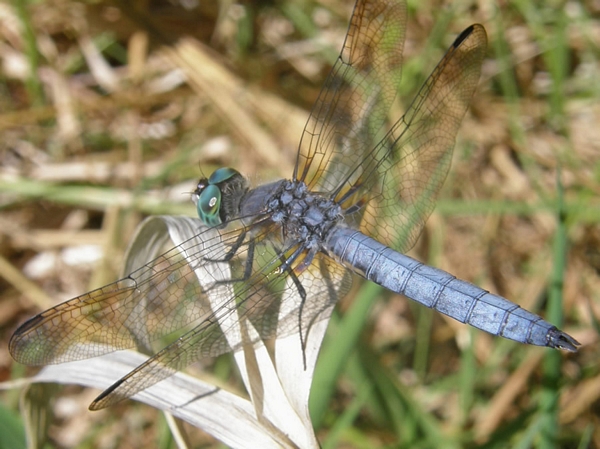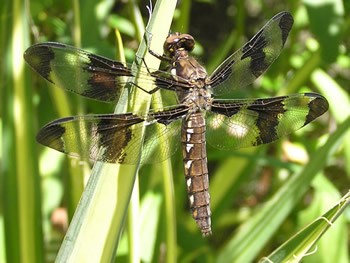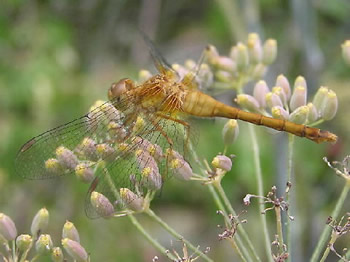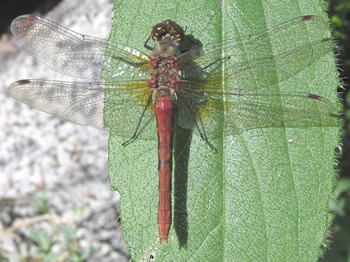 |
With their dazzling colours and stunning wings, dragonflies make terrific subjects for nature photographers. It's not always easy to get that perfect shot, especially when the dragonfly has nothing on its mind other than zipping around here and there hunting for food, but hopefully the tips on this page will prove helpful to you. |
| | |
 |
|
 |
Common Whitetail, Plathemis lydia |
|
Yellow-legged Meadowhawk, Sympetrum vicinum |
| | |
Many times dragonflies simply take off just as you approach whereas at other times you can get close enough to position the camera so that the whole frame is full of the subject. The trick here is to know that they are vicious hunters, but seem to have favourite twigs or stalks on which they perch and wait for passing prey. So with a bit of careful observation and patience you can hopefully be successful. Take your first shot and then carefully and quietly move in a little closer and take another one. |
| | |
|
|
 |
|
 |
Striped Meadowhawk, Sympettum pallipes |
| | |
|
|
One of the great advantages of digital photography is that you can take numerous shots for free! Keep moving in on the dragonfly, continuing to practice caution and being as quiet as possible. It helps to have a very quiet camera as well. These two shots are of the same subject but you can see the slight repositioning of the camera. |
| | |
|
|
 |
Damselflies like this Tule Bluet, Enallagma carunculatum, are also great hunters and usually catch anything that flies by. This one is enjoying a tasty lunch and was a lucky shot, the result of taking some extra time and watching the behaviour of the insect very carefully. |
| | |
 |
So all it really takes is a bit of patience, some careful observation and a spot of experimentation and hopefully you'll find success and get some terrific photographs of these amazing animals. |
| | |
|









